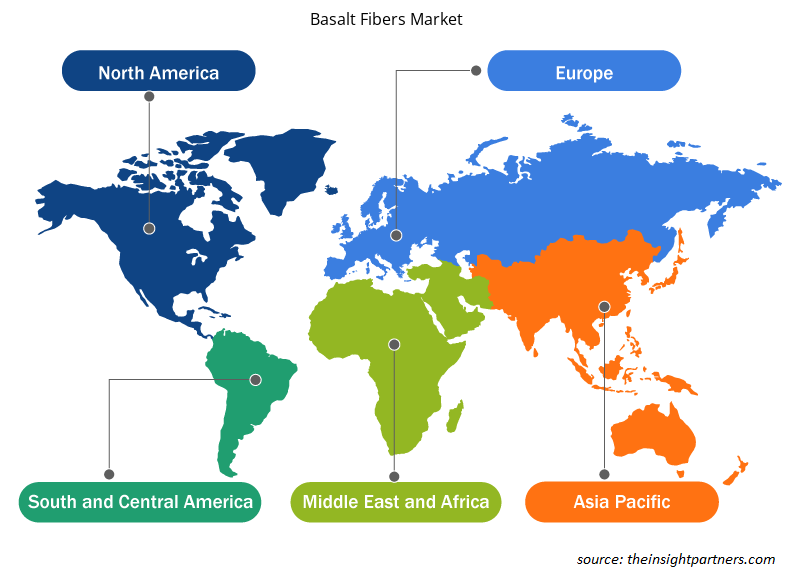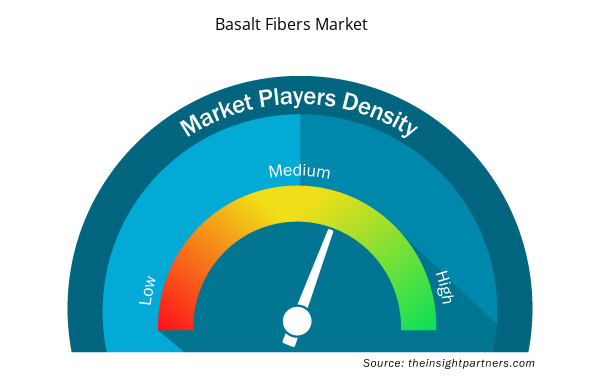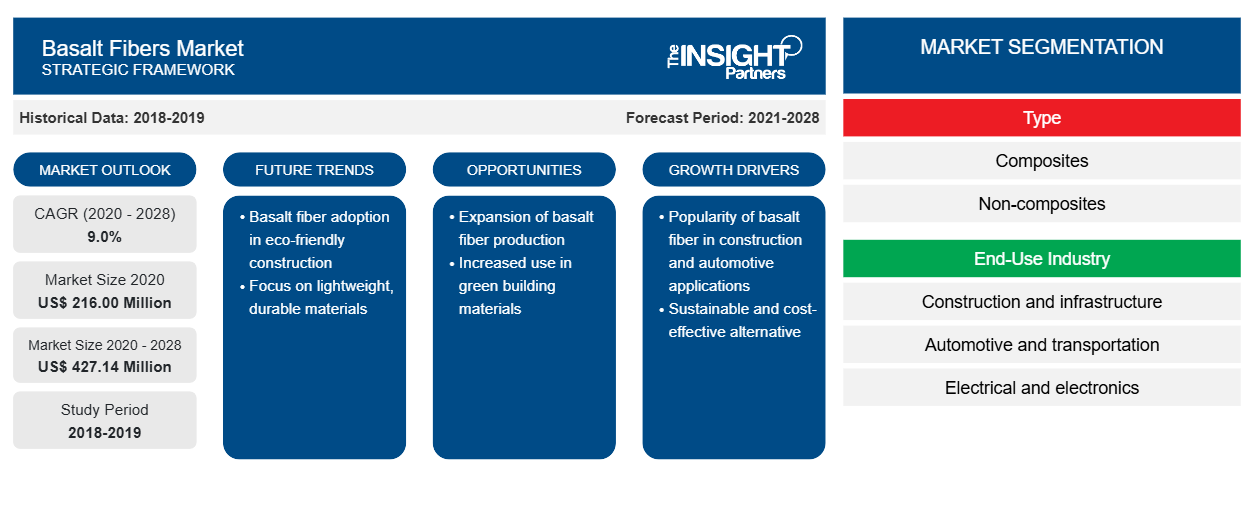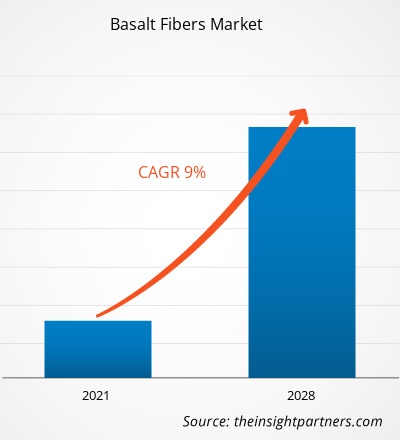Il mercato delle fibre di basalto è stato valutato a 216,00 milioni di dollari nel 2020 e si prevede che raggiungerà i 427,14 milioni di dollari entro il 2028; si prevede che registrerà un CAGR del 9,0% dal 2021 al 2028.
La fibra di basalto possiede proprietà chimiche simili alle fibre di vetro, ma ha proprietà fisico-chimiche migliori delle fibre di vetro. Si prevede che il mercato della fibra di basalto assisterà a una forte crescita a causa della sua domanda da parte di settori di utilizzo finale come l'automotive, la nautica, l'edilizia e le costruzioni e l'elettronica. L'aumento delle attività di costruzione in diverse regioni a causa della crescita della popolazione, dell'aumento del reddito e delle iniziative governative in varie economie per sviluppare infrastrutture migliori probabilmente stimolerà la crescita del mercato della fibra di basalto. Tuttavia, le proprietà incoerenti delle materie prime sono tra i fattori che frenano la crescita del mercato della fibra di basalto .
Nel 2020, l'Asia Pacifica ha rappresentato la quota maggiore del mercato globale della fibra di basalto. Il continente Asia Pacifica comprende diverse economie in via di sviluppo e sviluppate come India, Cina, Giappone, Corea del Sud e Australia. I paesi emergenti stanno assistendo a un'impennata delle attività di industrializzazione e urbanizzazione. Si prevede che la crescita dei progetti di costruzione in paesi come India e Cina e i crescenti investimenti in attività infrastrutturali, come la nuova costruzione di autostrade, ferrovie, linee metropolitane sotterranee e rivestimenti stradali, rafforzeranno il mercato della fibra di basalto nella regione.
Personalizza questo report in base alle tue esigenze
Riceverai la personalizzazione gratuita di qualsiasi report, comprese parti di questo report, o analisi a livello nazionale, pacchetto dati Excel, oltre a usufruire di grandi offerte e sconti per start-up e università
- Scopri le principali tendenze di mercato in questo rapporto.Questo campione GRATUITO includerà analisi di dati che spaziano dalle tendenze di mercato alle stime e alle previsioni.
Impatto della pandemia di COVID-19 sul mercato della fibra di basalto
La pandemia in corso ha drasticamente alterato lo stato del settore chimico e dei materiali e ha avuto un impatto negativo sulla crescita del mercato delle fibre di basalto. L'implementazione di misure per combattere la diffusione del virus ha avuto un impatto sulla crescita di diversi settori industriali. Settori come l'edilizia, l'automotive, la chimica e l'elettronica sono stati colpiti dall'improvvisa distorsione delle efficienze operative e dalle interruzioni nelle catene del valore attribuibili alla chiusura improvvisa dei confini nazionali e internazionali. Il significativo calo della crescita di diversi settori industriali ha avuto un impatto grave sulla domanda di fibre di basalto nel mercato globale. Tuttavia, poiché le economie stanno pianificando di rilanciare le loro operazioni, si prevede che la domanda di fibre di basalto aumenterà a livello globale. Si prevede che la crescente domanda di fibre di basalto in vari settori come l'edilizia, l'automotive, la chimica, l'elettronica e l'aerospaziale, insieme a significativi investimenti da parte di importanti produttori, guideranno la crescita delle fibre di basalto.
Approfondimenti di mercato
Ampie applicazioni di fibre di basalto in vari settori di utilizzo finale per guidare la crescita del mercato
Le fibre di basalto hanno un ampio spettro di applicazioni in vari settori di utilizzo finale, come edilizia, automotive, elettrico ed elettronico, chimico, aerospaziale e marittimo. Nell'edilizia, i fili di basalto tritati vengono utilizzati per aumentare la resistenza alle crepe dei pannelli di cemento. Grazie all'esclusiva stabilità chimica delle fibre di basalto in condizioni estreme, possono essere utilizzate in molte strutture in calcestruzzo, come ponti, tunnel, dighe e pavimenti. Le fibre di basalto vengono utilizzate nell'industria chimica nella produzione di tubi resistenti agli agenti chimici, rivestimenti protettivi, serbatoi di stoccaggio per liquidi corrosivi, fertilizzanti chimici, acidi, sostanze tossiche, ecc. Poiché l'applicazione delle fibre di basalto si sta approfondendo, la domanda di mercato per le fibre di basalto sta aumentando a un ritmo più rapido.
Approfondimenti sui prodotti
In base al prodotto, il mercato globale delle fibre di basalto è segmentato in roving, filo tagliato, filato ritorto, tessuti e nastri e altri. Il segmento roving ha detenuto la quota maggiore nel mercato globale delle fibre di basalto nel 2020. Il roving di basalto è un fascio di fibre di basalto complesse unidirezionali continue. Il roving ha resistenza agli ambienti aggressivi, elevata resistenza naturale, lunga durata e proprietà di isolamento elettrico superiori. In base alle sue caratteristiche tecniche, il roving di basalto supera il vetro E e il vetro S sotto numerosi aspetti. Il roving di basalto è estremamente resistente al calore e può resistere a temperature fino a 1.000 °C per un breve periodo.
Tra i principali attori chiave che operano nel mercato globale della fibra di basalto figurano: Kamenny Vek Company, Fiberbas Construction and Building Technologies, Hydro Design Management Co. Pvt. Ltd., Hg Gbf Basalt Fiber Co., Ltd, Bastech, Mafic SA, Shanxi Basalt Fiber Technology Co. Ltd, Technobasalt-Invest LLC, Deutsche Basalt Faser Gmbh e Basalt Engineering LLC.
Segnala i riflettori
- Tendenze industriali progressive nel mercato della fibra di basalto per aiutare gli operatori a sviluppare strategie efficaci a lungo termine
- Strategie di crescita aziendale adottate dai mercati sviluppati e in via di sviluppo
- Analisi quantitativa del mercato della fibra di basalto dal 2019 al 2028
- Stima della domanda globale di fibra di basalto
- Analisi PEST per illustrare l'efficacia degli acquirenti e dei fornitori che operano nel settore
- Sviluppi recenti per comprendere lo scenario competitivo del mercato
- Tendenze e prospettive del mercato, nonché fattori che guidano e frenano la crescita del mercato della fibra di basalto
- Assistenza nel processo decisionale evidenziando le strategie di mercato che sostengono l'interesse commerciale, portando alla crescita del mercato
- La dimensione del mercato delle fibre di basalto in vari nodi
- Panoramica dettagliata e segmentazione del mercato, nonché dinamiche del settore della fibra di basalto
- Dimensioni del mercato della fibra di basalto in varie regioni con promettenti opportunità di crescita
Approfondimenti regionali sul mercato delle fibre di basalto
Le tendenze regionali e i fattori che influenzano il mercato delle fibre di basalto durante il periodo di previsione sono stati ampiamente spiegati dagli analisti di Insight Partners. Questa sezione discute anche i segmenti e la geografia del mercato delle fibre di basalto in Nord America, Europa, Asia Pacifico, Medio Oriente e Africa e America meridionale e centrale.

- Ottieni i dati specifici regionali per il mercato delle fibre di basalto
Ambito del rapporto di mercato sulle fibre di basalto
| Attributo del report | Dettagli |
|---|---|
| Dimensioni del mercato nel 2020 | 216,00 milioni di dollari USA |
| Dimensioni del mercato entro il 2028 | 427,14 milioni di dollari USA |
| CAGR globale (2020 - 2028) | 9,0% |
| Dati storici | 2018-2019 |
| Periodo di previsione | 2021-2028 |
| Segmenti coperti | Per tipo
|
| Regioni e Paesi coperti | America del Nord
|
| Leader di mercato e profili aziendali chiave |
|
Densità degli attori del mercato: comprendere il suo impatto sulle dinamiche aziendali
Il mercato delle fibre di basalto sta crescendo rapidamente, spinto dalla crescente domanda degli utenti finali dovuta a fattori quali l'evoluzione delle preferenze dei consumatori, i progressi tecnologici e una maggiore consapevolezza dei benefici del prodotto. Con l'aumento della domanda, le aziende stanno ampliando le loro offerte, innovando per soddisfare le esigenze dei consumatori e capitalizzando sulle tendenze emergenti, il che alimenta ulteriormente la crescita del mercato.
La densità degli operatori di mercato si riferisce alla distribuzione di aziende o società che operano in un particolare mercato o settore. Indica quanti concorrenti (operatori di mercato) sono presenti in un dato spazio di mercato in relazione alle sue dimensioni o al valore di mercato totale.
Le principali aziende che operano nel mercato delle fibre di basalto sono:
- Azienda Kamenny Vek
- Fiberbas Costruzioni e tecnologie edilizie
- Società di gestione di progetti idroelettrici
- Hg Gbf Fibra di basalto Co., Ltd
- Bastech
Disclaimer : le aziende elencate sopra non sono classificate secondo un ordine particolare.

- Ottieni una panoramica dei principali attori del mercato delle fibre di basalto
Mercato globale delle fibre di basalto
Per Prodotto
- Vagabondare
- Filo tagliato
- Filato ritorto
- Tessuti e nastri
- Altri
Per settore di utilizzo finale
- Costruzione
- Automobilistico
- Elettrico ed elettronico
- Chimico
- Altri
Profili aziendali
- Azienda Kamenny Vek
- Fiberbas Costruzioni e tecnologie edilizie
- Società di gestione di progetti idroelettrici
- Hg Gbf Fibra di basalto Co., Ltd
- Bastech
- Mafico SA
- Tecnologia della fibra di basalto dello Shanxi Co. Ltd
- Technobasalt-Invest LLC
- Deutsche Basalt Faser GmbH
- Ingegneria del basalto LLC
- Analisi storica (2 anni), anno base, previsione (7 anni) con CAGR
- Analisi PEST e SWOT
- Valore/volume delle dimensioni del mercato - Globale, regionale, nazionale
- Industria e panorama competitivo
- Set di dati Excel


- Molecular Diagnostics Market
- Ceiling Fans Market
- Influenza Vaccines Market
- Data Annotation Tools Market
- Analog-to-Digital Converter Market
- Flexible Garden Hoses Market
- Fertilizer Additives Market
- Batter and Breader Premixes Market
- Trade Promotion Management Software Market
- Medical and Research Grade Collagen Market

Report Coverage
Revenue forecast, Company Analysis, Industry landscape, Growth factors, and Trends

Segment Covered
This text is related
to segments covered.

Regional Scope
North America, Europe, Asia Pacific, Middle East & Africa, South & Central America

Country Scope
This text is related
to country scope.
Domande frequenti
Asia-Pacific is estimated to register the fastest CAGR in the market over the forecast period. Asia Pacific comprises several economies such as India, China, Japan, South Korea, and Australia. These countries are witnessing an upsurge in industrialization and urbanization activities, offering ample opportunities for the key market players in the basalt fiber market. In Asia Pacific, there has been an increase in the consumption of basalt fiber in various industries, such as wind energy, construction & infrastructure, electrical & electronics, and automotive. Along with this, the rise in awareness regarding sustainable living and environment-friendly materials used in the application of infrastructure, aerospace, and other industries boosts the demand for basalt fibers in the region. Features of basalt fiber such as low cost, easy availability, and increasing production capacities bolster the growth of the basalt fiber market in Asia Pacific.
Based on end-use industry, automotive segment led the global basalt fiber market during the forecasted period. Basalt fiber has various properties such as high mechanical strength, resistance to high temperature, durability, and chemical resistance. It is also environmentally friendly. Such properties make basalt fiber an ideal material to be used in the automotive industry to produce headliners, CNG cylinders, brake pads and clutch plates, thermo insulation for exhaust systems, muffler’s filler, interior and exterior parts, and thermoplastic parts. Basalt fiber is lighter than steel. The fiber has high mechanical strength and an extended range of working temperatures. It is cost-effective along with excellent recyclability. All these properties made basalt fiber one of the ideal materials to be used to produce CNG cylinders.
On the basis of end-use industry, construction segment is leading the basalt fiber market during the forecast period. Basalt fibers are primarily employed in the construction industry as it has a higher strength than steel and is resistant to electromagnetic radiations and ultraviolet rays. Basalt fiber is three times lighter than steel and is 2.5 times stronger in tensile strength than steel. It also has an extremely lower coefficient of heat conductivity than steel, which improves energy efficiency. In the construction industry, basalt fiber is used in various applications, such as in the usage of wet or dry chopped strand for premix technology, basalt roving for spray up and shotcrete technologies, high strength roving for the manufacturing of rebars and pultruded profiles, and basalt fiber fabrics for concrete reinforcement and building thermo insulation.
Based on product, fabrics and tapes segment is expected to grow at the fastest CAGR from 2021 to 2028. Basalt woven and knitted fabrics are mostly manufactured from direct roving, twisted yarns, special weaving, and knitting machines. Basalt fabrics are generally used for producing structural-basalt plastics, which are based on various thermosetting binders. It can also be used as a base when manufacturing soft and rigid roofing as well as for electrotechnical purposes to produce insulation materials. The basalt fiber tapes are used with resin and are compatible with polyester, epoxy, and vinyl ester. These tapes are used for the selective reinforcement of laminates, sleeve or pipe winding, seams, and molding. The finished edges of the basalt fiber provide easy handling and a clean, finished appearance, which prevents the tape from unraveling.
The major players operating in the basalt fiber market are Kamenny Vek Company, Fiberbas Construction and Building Technologies, Hydro Design Management Co. Pvt. Ltd., Hg Gbf Basalt Fiber Co., Ltd., Bastech, Mafic SA, Shanxi Basalt Fiber Technology Co. Ltd., Technobasalt-Invest LLC, Deutsche Basalt Faser Gmbh, and Basalt Engineering LLC.
In 2020, Asia-Pacific held the largest revenue share of the global basalt fiber market. Asia-Pacific continent comprises several developing and developed economies such as India, China, Japan, South Korea, and Australia. These emerging countries are witnessing an upsurge in industrialization and urbanization activities, offering ample opportunities for the key market players in the basalt fiber market. Asia-Pacific region is anticipated to propel the basalt fiber demand owing to the presence of several domestic players in the vertical market segment such as construction and automotive. The basalt fiber market is expected to witness huge demand from the construction and automotive industries due to their resistance power to varying temperatures and chemicals, low water absorption, high mechanical strength, and durability. Besides, basalt fiber finds applications in marine, aerospace & defense, and others. The basalt fiber market is expected to rise during the projection period due to enormous growth in the automotive sector especially in countries including India and China. Additionally, the rising urbanization, rising population, and the presence of government support are the other drivers for the market growth in the region.
Trends and growth analysis reports related to Chemicals and Materials : READ MORE..
The List of Companies - Basalt Fiber Market
- Kamenny Vek Company
- Fiberbas Construction and Building Technologies
- Hydro Design Management Co. Pvt. Ltd.
- Hg Gbf Basalt Fiber Co., Ltd
- Bastech
- Mafic SA
- Shanxi Basalt Fiber Technology Co. Ltd
- Technobasalt-Invest LLC
- Deutsche Basalt Faser Gmbh
- Basalt Engineering LLC
The Insight Partners performs research in 4 major stages: Data Collection & Secondary Research, Primary Research, Data Analysis and Data Triangulation & Final Review.
- Data Collection and Secondary Research:
As a market research and consulting firm operating from a decade, we have published and advised several client across the globe. First step for any study will start with an assessment of currently available data and insights from existing reports. Further, historical and current market information is collected from Investor Presentations, Annual Reports, SEC Filings, etc., and other information related to company’s performance and market positioning are gathered from Paid Databases (Factiva, Hoovers, and Reuters) and various other publications available in public domain.
Several associations trade associates, technical forums, institutes, societies and organization are accessed to gain technical as well as market related insights through their publications such as research papers, blogs and press releases related to the studies are referred to get cues about the market. Further, white papers, journals, magazines, and other news articles published in last 3 years are scrutinized and analyzed to understand the current market trends.
- Primary Research:
The primarily interview analysis comprise of data obtained from industry participants interview and answers to survey questions gathered by in-house primary team.
For primary research, interviews are conducted with industry experts/CEOs/Marketing Managers/VPs/Subject Matter Experts from both demand and supply side to get a 360-degree view of the market. The primary team conducts several interviews based on the complexity of the markets to understand the various market trends and dynamics which makes research more credible and precise.
A typical research interview fulfils the following functions:
- Provides first-hand information on the market size, market trends, growth trends, competitive landscape, and outlook
- Validates and strengthens in-house secondary research findings
- Develops the analysis team’s expertise and market understanding
Primary research involves email interactions and telephone interviews for each market, category, segment, and sub-segment across geographies. The participants who typically take part in such a process include, but are not limited to:
- Industry participants: VPs, business development managers, market intelligence managers and national sales managers
- Outside experts: Valuation experts, research analysts and key opinion leaders specializing in the electronics and semiconductor industry.
Below is the breakup of our primary respondents by company, designation, and region:

Once we receive the confirmation from primary research sources or primary respondents, we finalize the base year market estimation and forecast the data as per the macroeconomic and microeconomic factors assessed during data collection.
- Data Analysis:
Once data is validated through both secondary as well as primary respondents, we finalize the market estimations by hypothesis formulation and factor analysis at regional and country level.
- Macro-Economic Factor Analysis:
We analyse macroeconomic indicators such the gross domestic product (GDP), increase in the demand for goods and services across industries, technological advancement, regional economic growth, governmental policies, the influence of COVID-19, PEST analysis, and other aspects. This analysis aids in setting benchmarks for various nations/regions and approximating market splits. Additionally, the general trend of the aforementioned components aid in determining the market's development possibilities.
- Country Level Data:
Various factors that are especially aligned to the country are taken into account to determine the market size for a certain area and country, including the presence of vendors, such as headquarters and offices, the country's GDP, demand patterns, and industry growth. To comprehend the market dynamics for the nation, a number of growth variables, inhibitors, application areas, and current market trends are researched. The aforementioned elements aid in determining the country's overall market's growth potential.
- Company Profile:
The “Table of Contents” is formulated by listing and analyzing more than 25 - 30 companies operating in the market ecosystem across geographies. However, we profile only 10 companies as a standard practice in our syndicate reports. These 10 companies comprise leading, emerging, and regional players. Nonetheless, our analysis is not restricted to the 10 listed companies, we also analyze other companies present in the market to develop a holistic view and understand the prevailing trends. The “Company Profiles” section in the report covers key facts, business description, products & services, financial information, SWOT analysis, and key developments. The financial information presented is extracted from the annual reports and official documents of the publicly listed companies. Upon collecting the information for the sections of respective companies, we verify them via various primary sources and then compile the data in respective company profiles. The company level information helps us in deriving the base number as well as in forecasting the market size.
- Developing Base Number:
Aggregation of sales statistics (2020-2022) and macro-economic factor, and other secondary and primary research insights are utilized to arrive at base number and related market shares for 2022. The data gaps are identified in this step and relevant market data is analyzed, collected from paid primary interviews or databases. On finalizing the base year market size, forecasts are developed on the basis of macro-economic, industry and market growth factors and company level analysis.
- Data Triangulation and Final Review:
The market findings and base year market size calculations are validated from supply as well as demand side. Demand side validations are based on macro-economic factor analysis and benchmarks for respective regions and countries. In case of supply side validations, revenues of major companies are estimated (in case not available) based on industry benchmark, approximate number of employees, product portfolio, and primary interviews revenues are gathered. Further revenue from target product/service segment is assessed to avoid overshooting of market statistics. In case of heavy deviations between supply and demand side values, all thes steps are repeated to achieve synchronization.
We follow an iterative model, wherein we share our research findings with Subject Matter Experts (SME’s) and Key Opinion Leaders (KOLs) until consensus view of the market is not formulated – this model negates any drastic deviation in the opinions of experts. Only validated and universally acceptable research findings are quoted in our reports.
We have important check points that we use to validate our research findings – which we call – data triangulation, where we validate the information, we generate from secondary sources with primary interviews and then we re-validate with our internal data bases and Subject matter experts. This comprehensive model enables us to deliver high quality, reliable data in shortest possible time.


 Ottieni un campione gratuito per questo repot
Ottieni un campione gratuito per questo repot